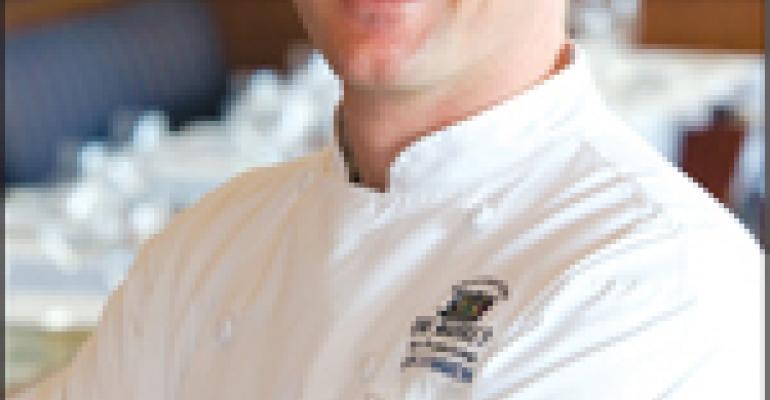Eager to work with the flavors and textures of sous-vide cooking, but blanching at the price of laboratory-grade equipment, some chefs are finding cost-efficient compromises that let them test the waters of the technique.
An economy-class jaunt on the sous-vide bandwagon may involve using common slide-top food-storage bags in lieu of specialized plastic film pouches, cooking in a pot of water rather than a thermal circulator, scouring online auction sites for refurbished equipment and even buying a consumer-grade food-sealer.
Sous vide, a French term for “under vacuum,” refers to vacuum-sealing food in a plastic bag and cooking it in a low-temperature water bath. Proponents claim that it maintains the natural flavors, nutrients and textures of food better than other methods. The basic professional sous-vide battery consists of a vacuum-chamber machine to draw the air from the bag and seal it, a thermal circulator—a device with a heating element and digital controls that keep water moving in a vessel at a precise, consistent temperature—and an accurate thermometer to monitor the food’s internal temperature.
Such equipment, some of it originally developed for scientific fields, is pricey. For instance, new thermal circulators run $1,000 and up, and new vacuum-chamber machines cost between $2,000 and $4,000, said Dave Arnold, director of culinary technology at The French Culinary Institute in New York City. “The real throwdown in money is for vacuum equipment,” he said.
However, some users start out with setups that are far less expensive. Chef-partner Mark Dommen didn’t buy a thermal circulator when he first delved into sous vide at One Market Restaurant in San Francisco, which is part of the Lark Creek Restaurant Group based there. Instead, he simmered a pot of water on the stove and checked the temperature with a digital thermometer. He already had a vacuum-chamber machine on hand for packaging steaks and fish fillets for refrigerated storage. His improvised system “worked OK for afternoon prep work,” Dommen said. “But it was difficult to do things à la minute at service. You have to take care to keep the temperature constant, but you get interrupted too much.”
Now, after upgrading to a thermal circulator—a $1,800 Roner machine—and using it for several months, he finds that one unit is not enough. Having a second circulator would allow for long, slow preparations of braised items while keeping the other machine handy for prep and service. He said he plans to look on eBay for refurbished circulators, which he said might be priced as low as $250 to $500.
Seth Bixby Daugherty, founder of Real Food Initiatives, a nonprofit organization based in Minneapolis that works to improve school lunch programs, found his own creative work-around for sous vide when he was executive chef at the high-end Cosmos in Minneapolis. There his sous-vide heating medium was a pot of water on an induction burner.
“I just set it to the temperature I needed,” Daugherty said. He reported satisfactory results using “a Target model” vacuum machine and “super cheap” sous-vide bags. “But you can get away with using Ziploc bags,” he added.
At Picco in Larkspur, Calif., chef-owner Bruce Hill makes extensive use of his prograde PolyScience thermal circulator and Minipack vacuum machine for his locally sourced, seasonal menu. He touted the “night-and-day difference in flavor” between sous-vide artichokes and simmered ones, for instance.
Hill said someone who wants to experiment with sous vide can approximate the process with a FoodSaver vacuum-sealer, widely available in retail stores for about $120, and an ordinary Crock-Pot slow cooker.
“I actually use the FoodSaver at Bix,” said Hill, referring to the San Francisco restaurant in which he is a partner. “We blow through a unit in about nine months, but they don’t cost much to replace.”

